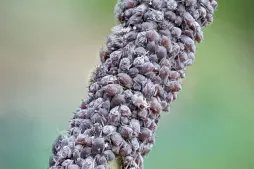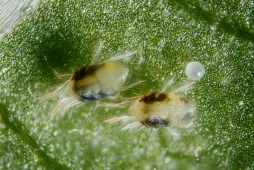Aeschynanthus longicaulis, an aeschynanthus with marbled foliage
Aeschnynanthus longicaulis, also known as Aeschynanthus mamoratus, grows in the rainforests of China and Southeast Asia. This plant of the Gesneriaceae family has marbled foliage.
How to recognize Aeschynanthus longicaulis?
Aeschynanthus longicaulis is an epiphytic evergreen. It grows naturally on other plants, generally trees, without parasitizing them. It is a bushy plant that can be grown as a hanging plant.
Its slender, purple, semi-climbing or drooping stems can reach up to 80 centimetres in length.
Its long leaves - six to twelve centimetres long and two to three centimetres wide - are opposite, elliptical to oblanceolate. Shiny dark green, they are mottled pale green or creamy white on the upper surface and reddish-brown to brown on the underside. Leaf margins are finely serrated and wavy, with a pointed apex.
More shy than the exuberant Aeschynanthus speciosus, Aeschynanthus longicaulis hides a few yellow-green tubular flowers spotted with brown in its imposing foliage.
The elongated pods bear numerous small seeds with white hairs at their tips.
Even if it's not toxic, keep your Aeschynanthus longicaulis out of reach of pets. It would be a shame for its foliage to be nibbled or for your kittens to hang from its stems.
Our maintenance tips
The plant appreciates light, but fears direct sunlight. Place it behind an east- or west-facing window.
Watering
The substrate must always remain moist, but the plant must not have its feet in water. Remove stagnant water from the saucer or planter to prevent root rot.
Water the soil with non-calcareous water at room temperature. Use rainwater or, if you don't have any, demineralized water.
Spray
Spray foliage with water at room temperature. Do not use tap water. It is often too hard and leaves marks on the leaves.
Fogging temporarily increases humidity and combats the appearance of parasites.
Repotting
In spring, transfer your Aeschynanthus longicaulis to a larger pot, so that it can continue to grow.
Obtain a pierced pot three to five centimetres larger in diameter than the previous one. Line the bottom with clay balls or pebbles.
The Aeschynanthus longicaulis appreciate light, well-drained soil. You can use a mixture of heather earth and perlite or a potting soil for flowering plants to which you add sand.
Pour on a layer of substrate and plant your specimen. Fill the pot with your mixture and tamp gently. Water with non-calcareous water at room temperature to encourage rooting.
Place your pot on a dish of moist clay balls to improve humidity.
Fertilization
You can stimulate the development of your plant during its growth phase, in spring and summer, with fertilizer.
Apply a liquid fertilizer for flowering plants to promote the appearance of flower buds.
Cleaning
Dust accumulating on leaves slows down the photosynthesis process. To ensure that your Aeschynanthus longicaulis receives sufficient light, clean its foliage with a damp cloth.
This operation also prevents mites from settling in.
This operation also prevents mites from settling in.
Prune
Pruning encourages branching and helps maintain a dense growth habit.
After flowering, remove wilted flowers and cut back stem ends. Use pruning shears or scissors to cut back between three and five centimetres. Remember to clean your tool before use to avoid spreading disease!
Cutting
Cutting is carried out during the strong growth phase, generally in spring and early summer.
Obtain a small, pierced pot. Fill it with a mixture of potting soil for flowering plants (about two-thirds) and sand (one-third).
Make a pilot hole with a pick, a pencil or your finger. Plant your Aeschynanthus longicaulis cutting.
Keep the soil moist by watering before the surface dries out.
Diseases / Threats
Information
| Family | Gesneriaceae - Gesneriaceae |
| Type | Aeschynanthe - Aeschynanthus |
| Species | Aeschynanthus longicaulis - Aeschynanthus longicaulis |
| Lifecycle | Perennial |
| Foliage | Evergreen |
| Exposures | |
| Substrat | |
| Planting methods |
In pots In tubs Planter |
| Categories | |
| Tags |
Beginner Fritillary |
| Origin |
Southeast Asia |
| Hardiness (USDA) | 11b |
| Leaf color |
|
| Flower colors |
|
Discover plants from the same family
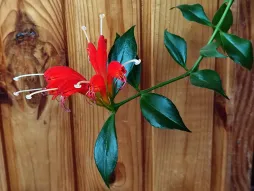
Aeschynanthus speciosus
Discover
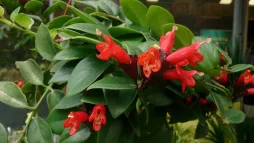
Aeschynanthus radicans
Discover
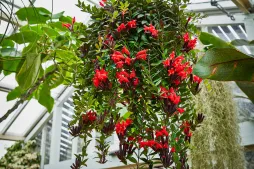
Aeschynanthus pulcher
Discover
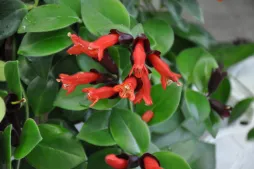
Aeschynanthus 'Mona Lisa'
Discover












